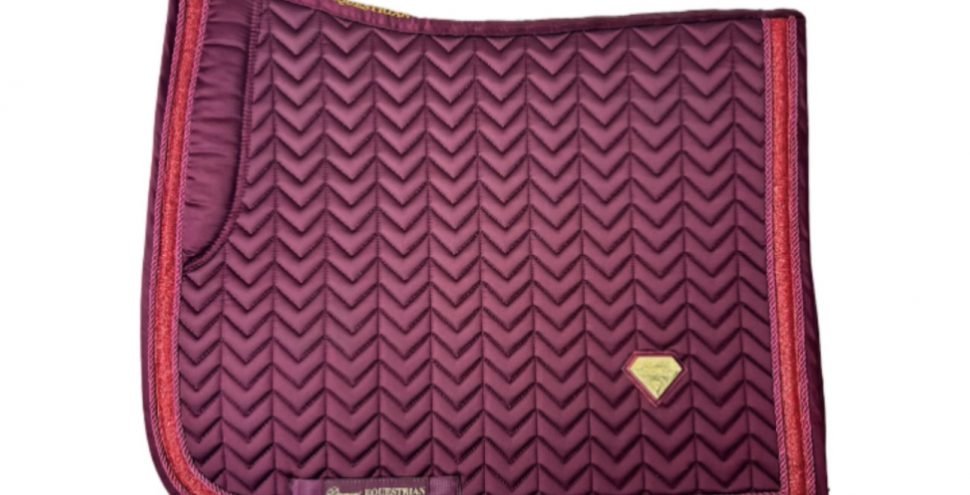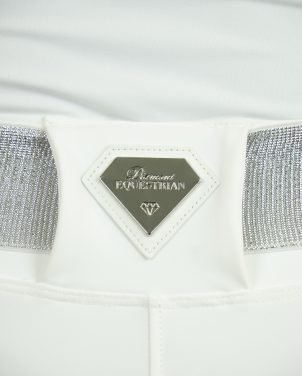Choosing the right saddle pad is crucial not just for the comfort of your horse, but also for the effectiveness of your ride. A well-fitted saddle pad protects your horse’s back, absorbs shocks, and prevents saddle sores, ensuring that your horse remains healthy and eager to perform. That’s why it’s important to understand the essential role that saddle pads play in daily riding activities, whether you’re training, competing, or simply enjoying a leisurely ride.
Each aspect plays a pivotal role in overall equine health and rider comfort, from the materials used to the design tailored to different riding disciplines. By prioritizing your horse’s needs with the best saddle pad, you transform riding from a routine activity into an extraordinary experience for both you and your horse. With this foundation, let’s explore how you can choose the best saddle pad to complement your equestrian style and enhance your riding performance.
Understanding the Importance of a Quality Saddle Pad
The right saddle pad is more than just a piece of equestrian equipment; it’s a crucial element that ensures the comfort and protection of both horse and rider. A quality saddle pad acts as a buffer, reducing the friction between the saddle and the horse’s skin, which helps to prevent sores and irritation. It also helps to distribute the weight of the saddle and rider more evenly across the horse’s back, which is essential for the animal’s long-term musculoskeletal health.
The choice of a saddle pad can significantly impact the horse’s performance. A well-selected saddle pad absorbs shock and minimizes the impact of the rider’s movements, allowing the horse to move more freely and comfortably. This boosts the horse’s ability to perform and enhances the riding experience for the equestrian. It’s clear, then, that selecting the right saddle pad is not just about aesthetics—it’s about the wellbeing of your horse and the quality of your ride.
Key Features to Look for in Saddle Pads
When selecting a saddle pad, there are several key features to consider that contribute to the overall effectiveness of the product. First and foremost, the material of the saddle pad should be breathable and capable of wicking away moisture. This helps to keep the horse cool and dry, even during intense activities, preventing overheating and discomfort.
Another critical feature is the thickness and density of the padding. The pad should be thick enough to provide adequate cushioning, but not so bulky that it interferes with the fit of the saddle or the rider’s connection with the horse.
Additionally, the design of the saddle pad should allow for a snug fit; it should conform to the shape of the horse’s back and not shift during movement, which could lead to uneven pressure distribution or rubbing. Opting for a saddle pad with anti-slip properties can also be a wise choice, as it ensures the stability of the saddle, no matter how vigorous the ride.
How to Properly Fit a Saddle Pad for Your Horse
Fitting a saddle pad correctly is just as crucial as choosing the right one. A properly fitted saddle pad greatly enhances your horse’s comfort and prevents the development of pressure points during rides.
Start by placing the pad high up on the withers, and then slide it into place to ensure that it aligns properly with the contours of your horse’s back and shoulders. This initial adjustment prevents the pad from pulling down on the withers and spine, which can lead to discomfort and potential injuries.
Next, check that the pad extends slightly beyond the edges of the saddle on all sides. This ensures that no part of the saddle or your weight directly contacts the horse’s skin, which can cause rubbing and sores. Also, make sure the saddle pad is even on both sides to ensure symmetrical pressure distribution.
An uneven pad can lead to an imbalance in the saddle, affecting your horse’s movement and causing potential harm over time. Regular checks and adjustments each time you saddle up can save your horse from discomfort and long-term health issues.
Maintaining Your Saddle Pad: Cleaning and Storage Tips
Keeping your saddle pad clean and well-maintained is essential for the health of your horse as well as the longevity of the pad. After each ride, shake off any dirt or hair and spot clean any areas that seem particularly sweaty or dirty.
For a deeper clean, most saddle pads can be machine washed on a gentle cycle with cold water. We recommend using a mild detergent that is free of dyes and perfumes to help maintain the integrity of the material and prevent any potential skin irritation for your horse.
When drying your saddle pad, avoid the dryer. Instead, hang it in a cool, dry place out of direct sunlight, as the sun can bleach and weaken the fabric. For storage, ensure the pad is completely dry before folding it loosely to prevent creasing or damage to the padding.
Store it in a clean, dry area to avoid mold and mildew buildup, which could endanger your horse’s health. Proper care, cleaning, and storage will significantly extend the life of your saddle pad and ensure it continues to provide comfort and protection ride after ride.
Horse Comfort 101: Picking the Perfect Saddle Pad
As passionate horse enthusiasts at Diamonte Equestrian, we understand that every aspect of your horse’s gear plays a role in both your riding experience and your horse’s well-being. A quality saddle pad, properly fitted and well cared for, can make a significant difference in your horse’s performance and endurance.
Remember, the care you give your equipment reflects the care you have for your horse. Elevate your riding gear by exploring our extensive collection of high-quality equestrian riding clothes that blend performance with style. Visit us today and experience the Diamonte difference in every ride.





